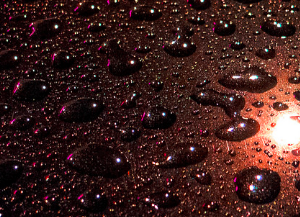This is the first article in the series Pocket Science. With it, I want to discuss the context and importance of recent research in shorter articles potentially with more visual media. I hope that this will help people be more interested with the research going on around the world and want to stay updated with specific stories! Anyway, here’s the first installment; any feedback would be great, thanks!
We all know the four states of matter: solid, liquid, gas, and plasma. Water can easily be converted to all of them, freezing into ice at low temperatures and evaporating into vapor at high temperature, but most pure elements of the periodic table exist in only one or two states at pressures and temperatures that are found on earth. Nevertheless, scientists are always trying to push the limits of the elements to make new metals that can be used to better technology. Recently, researchers at Harvard University claimed to have made solid metallic hydrogen, a statement that has become controversial in the physics community. Below is a video of the researchers describing their find and the uses of metallic hydrogen.
To change the phases of elements means changing the chemical and physical arrangement of the atoms*. In general, high pressures and low temperatures lead to solids and vice versa. Principal investigators Drs. Silvera and Dias say that they have pushed conditions to extremely high pressures nearing 500 gigapascals (which is higher than that of the center of the earth’s core). They did this by using a diamond anvil cell, which is a device that creates high pressures by trapping sample between diamond facets. By “cranking up” the pressure, liquid hydrogen transformed slowly but surely into a shiny metallic-like solid formed on the tip of the diamond.
This procedure, however, is under a lot of scrutiny from the high-pressure physics community despite the publication in the esteemed journal Science.
- Many scientists are skeptical that the shiny material is hydrogen: at very high pressures, aluminum oxide can coat the diamonds within the anvil cell. So is the metal hydrogen or is it just an artifact from forcing the instrument to press harder than its limits? Future experiments with infrared light and x-ray probes will characterize this metal in a more quantitative way.
- The claim that the Harvard researchers even obtained the near 500GPa is also under question. In the paper, the precision in measuring the pressure obtained is indeed sketchy: a screw was turned and the pressure, estimated.
- Crazily enough, the data and results of this novel Science paper is actually a case study: the experiment was not repeated before publication
If there is any moral that this news story has, it’s that peer review should be more strict and rigorous when accepting papers for publication. Even though this finding would be a big deal with very high impact, follow-up studies should be done before a big publication.
Sarah Kearns is a first year in the Chemical Biology Doctoral Program at the University of Michigan. Currently, she is doing research rotations to find a long-term lab environment ideally focusing on enzyme structure-function relationships for drug development applications. You can find her on Twitter (@annotated_sci), LinkedIn, or at her website Annotated Science.


Leave a Reply